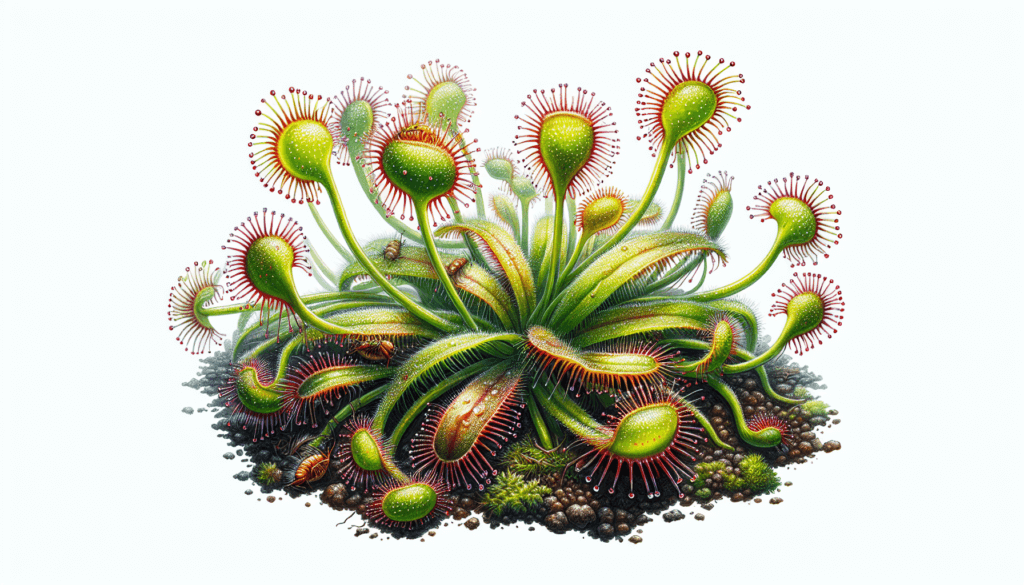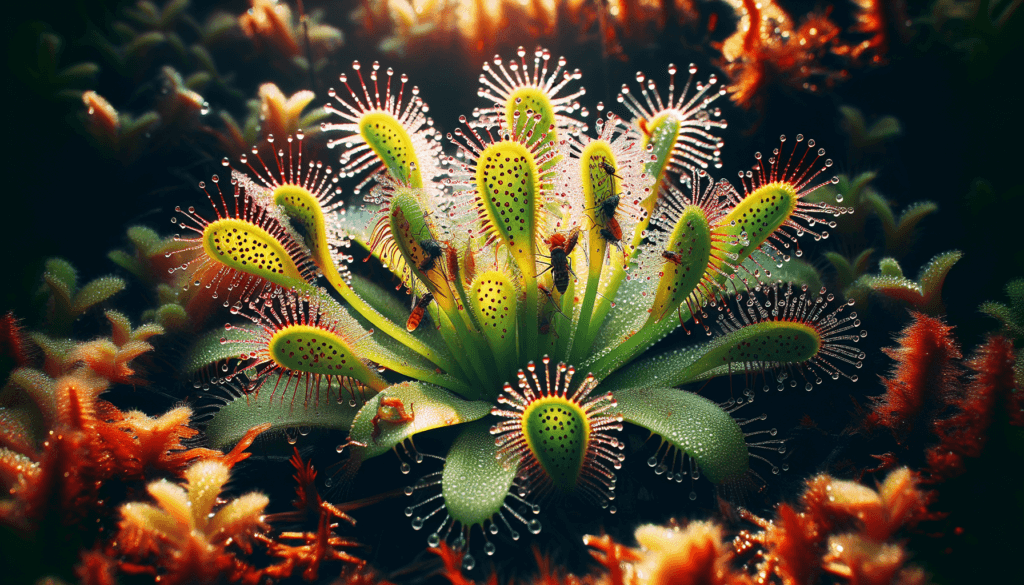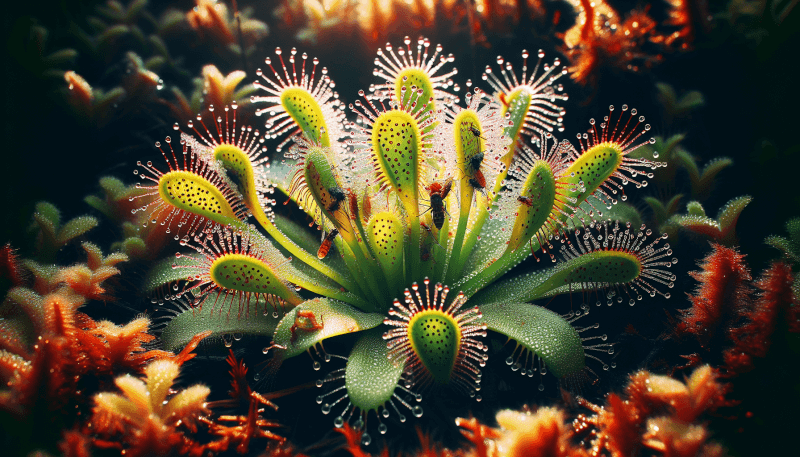If you’ve ever wanted to add a unique and fascinating plant to your collection, look no further than the Sundew plant. Known for its captivating appearance and carnivorous tendencies, the Sundew plant is a popular choice among plant enthusiasts. In this article, we will explore the ins and outs of Sundew plant care, sharing tips and tricks to help you maintain a thriving and healthy plant. From its specific watering needs to the importance of proper lighting, we’ll cover everything you need to know to keep your Sundew plant happy and thriving. So, get ready to dive into the captivating world of Sundew plant care!

Choosing the Right Sundew Plant
When it comes to selecting the right sundew plant for your home or garden, there are a few key considerations to keep in mind. First and foremost, you’ll need to evaluate your growing environment to ensure it’s suitable for the particular needs of sundew plants. Additionally, familiarizing yourself with the different popular varieties of sundews will help you make an informed decision.
Consideration for Growing Environment
Sundew plants thrive in specific growing conditions, so it’s important to take these into account when choosing the right plant for your space. These carnivorous plants love bright, indirect light, high humidity, and well-draining soil. They also prefer temperatures within a specific range, which we will discuss further in the subsequent sections.
Popular Varieties of Sundew Plants
There are many captivating varieties of sundew plants available, each with its distinctive characteristics. Some popular choices include Drosera capensis, which is known for its abundant production of dewy tentacles, and Drosera spatulata, which features spoon-shaped leaves. Drosera binata, with its unique forked leaves, and the vibrant red Drosera adelae are additional favorites among enthusiasts. Consider the size, appearance, and requirements of each variety before making your selection.
Sundew Plant Light Requirements
Proper lighting is crucial for the healthy growth and development of sundew plants. These carnivorous plants favor bright, indirect light, simulating the conditions they would typically experience in their natural habitats. While direct sunlight can be beneficial in moderation, prolonged exposure may cause damage to the leaves.
Preference for Bright Indirect Light
Sundews thrive in areas where they can bask in bright, indirect light for approximately 10 to 12 hours each day. Placing them near east-facing windows or using sheer curtains to filter intense sunlight can provide the perfect lighting conditions. If natural light is limited, supplementary lighting options such as fluorescent or LED grow lights can be used to supplement their needs.
Supplementary Lighting
When choosing supplementary lighting, opt for lights with a color temperature of around 5000 Kelvin, as this closely mimics natural daylight. Position the lights approximately 12 to 18 inches above the plants, ensuring uniform coverage. Remember to monitor the duration of artificial light exposure, as sundew plants require a period of darkness each day to thrive.
Temperature and Humidity
Sundews have specific temperature and humidity requirements to maintain optimal health and growth. Understanding these preferences will help you create an environment conducive to their well-being.
Ideal Temperature Range
Most sundew species prefer daytime temperatures between 70 to 80 °F (21 to 27 °C). Nighttime temperatures should ideally be around 50 to 60 °F (10 to 15 °C) to induce dormancy. However, certain species may have slightly different temperature requirements, so it’s essential to research the specific needs of the variety you have chosen.
Maintaining Humidity
Sundews are native to areas with high humidity, so it’s crucial to maintain a humid environment around these plants. One way to accomplish this is by placing a tray filled with water near the plants, leaving a gap between the tray bottom and the pots. The water will gradually evaporate, increasing the humidity levels in the surrounding area. Alternatively, using a humidifier or grouping multiple sundew plants together can help create a microclimate with ample moisture.
Watering Sundew Plants
Watering sundew plants requires a careful and strategic approach to ensure their carnivorous nature is adequately nourished and their soil remains moist.
Watering from the Bottom
Sundews have delicate, sensitive leaves covered in sticky tentacles, which are used to capture and digest insects. To avoid damaging these structures, it is best to water these plants from the bottom. Fill a tray or saucer with distilled water and place the pot in it. The water will be absorbed through the drainage holes, moistening the soil without interfering with the leaves.
Use of Distilled Water
Sundews are highly sensitive to minerals and chemicals found in tap water, which can harm their delicate roots. To protect your plants from any potential damage, it is advisable to use distilled water or rainwater for watering. These sources are void of harmful substances, ensuring your sundews receive the pure and uncontaminated water they require.

Feeding Sundew Plants
One of the unique aspects of sundew plants is their ability to capture and digest insects. This carnivorous diet is essential for their growth and overall health. Understanding the types of prey that sundews consume will enable you to provide the necessary nourishment for your plants.
Carnivorous Diet of Sundews
Sundews possess specialized leaves lined with tentacles that produce a sticky substance. When an insect lands on these leaves, it becomes ensnared in the glue-like dew. The tentacles then curl inward, encasing the insect, and release enzymes to digest its nutrients. This carnivorous diet supplements the plants’ nutritional needs, particularly for nitrogen, which is often scarce in their natural habitats.
Types of Prey for Sundews
Sundews primarily capture small insects such as fruit flies, gnats, aphids, and mosquitoes. They are also capable of trapping larger insects, including moths and spiders. If you choose to house your sundew plants indoors, ensure that you provide them with an environment conducive to attracting these prey organisms, such as opening windows or using bug traps. Alternatively, you can also purchase live or freeze-dried insects specifically formulated for carnivorous plants.
Potting and Soil Mix for Sundews
Choosing the right pot and soil mix is essential for the proper growth and development of sundew plants. These decisions will directly affect the drainage, aeration, and overall health of your plants.
Choosing the Right Pot
When selecting a pot for your sundew, opt for one with drainage holes at the bottom. This ensures any excess water can flow out freely and prevents soggy conditions, which can be detrimental to the sensitive roots. Additionally, choose a pot that is slightly larger than the current size of your plant to allow for future growth.
Recommended Soil Mix
Sundews require well-draining soil to prevent waterlogging and root rot. A suitable soil mix consists of a combination of sphagnum moss, perlite, and sand. This blend provides the appropriate balance of moisture retention and aeration. Avoid using regular potting soil or compost, as these tend to be too dense and can suffocate the roots.
Propagation Methods
If you wish to expand your sundew collection or share the joy of these captivating plants with others, propagation is an excellent option. Two common methods utilized for propagating sundews are leaf cuttings and division.
Leaf Cuttings
Leaf cuttings involve carefully removing a healthy leaf from the parent plant and placing it on a suitable medium, such as a moistened sphagnum moss. Over time, the leaf develops new plantlets, which can be potted once they have established roots. Leaf cuttings are a reliable and efficient way to propagate sundew plants, especially for species with smaller or fewer divisions.
Division Method
The division method is best suited for sundew plants that have formed multiple crowns or clumps. Gently remove the plant from its pot and separate the individual crowns, ensuring each division has its roots intact. Replant each division in its pot using the recommended soil mix and provide proper care as they acclimate to their new homes. Division allows for a quick multiplication of plants and can be particularly useful for larger, more mature specimens.
Pest and Disease Control
As with any plant, sundews are susceptible to pests and diseases that can hinder their growth and vitality. Taking preventative measures and promptly addressing any issues will help keep your plants healthy and thriving.
Preventing Common Pests
Common pests that may affect sundews include fungus gnats, aphids, and spider mites. To prevent infestations, avoid overwatering your plants, as damp conditions can attract these pests. Regularly inspect the leaves for any signs of pests and isolate any infected plants to prevent them from spreading. Introducing beneficial insects, such as ladybugs or predatory mites, can help control pest populations naturally.
Treating Common Diseases
Sundews are generally resilient against diseases, but occasional issues may arise. If you notice any signs of diseases, such as fungal infections or bacterial rots, it is important to act quickly. Firstly, isolate any infected plants to prevent the spread of the disease. Remove any affected leaves or plant parts to minimize the chances of reinfection. Adjust your watering practices to promote better airflow and ensure your plants are not sitting in damp conditions, which can exacerbate disease issues. If necessary, utilize appropriate fungicides or bactericides as a last resort.
Pruning and Maintenance
Regular pruning and maintenance are essential for the aesthetic appeal and overall health of your sundew plants. Keeping an eye on dead leaves and overcrowding will ensure your plants remain happy and thriving.
Trimming Dead Leaves
As sundew plants age, their oldest leaves may begin to wither and die. Regularly inspect your plants and remove any dead or dying leaves to maintain optimal health. This allows your plant to channel its energy into producing new growth rather than wasting resources on decaying foliage.
Dividing Crowded Plants
If you have noticed that your sundew plants have become overcrowded or are struggling to thrive, it may be time to divide them. Carefully remove the plant from its pot and separate the crowded sections, ensuring each division has enough roots to sustain itself. Repot each division using the recommended soil mix and provide proper care as they recover from the division process. Dividing crowded plants helps alleviate competition for resources and allows each individual plant to flourish.
Winter Care for Sundews
As the seasons change, it’s important to adjust your care routine to accommodate the winter months. Providing the proper conditions for dormancy is crucial to ensure the long-term health and longevity of your sundew plants.
Adjusting for Seasonal Changes
During the winter, sundews naturally enter a period of dormancy. This is characterized by a reduction in growth, with some species exhibiting dieback of leaves or even a complete disappearance of above-ground growth. To facilitate this dormancy period, gradually reduce the amount of light and water your plants receive as winter approaches. Make sure to monitor the temperature and maintain the ideal range discussed earlier, as this will help trigger the necessary physiological changes.
Creating Dormancy Conditions
To create suitable dormancy conditions, move your sundew plants to a cooler location, such as an unheated room or a windowsill away from drafts. Reduce watering during this period, ensuring the soil remains slightly damp, not saturated. However, do not let the soil dry out completely, as this can be harmful to the plant’s health. Resume regular care and gradually increase light exposure and watering as spring approaches, and your sundews will reemerge from their dormancy period, ready to thrive once again.
In conclusion, choosing the right sundew plant and providing it with the proper growing environment, light, temperature, humidity, watering, and feeding is the key to successfully caring for these captivating carnivorous plants. With the right attention and care, your sundews will reward you with their unique beauty and fascinating insect-catching abilities. Happy gardening!


